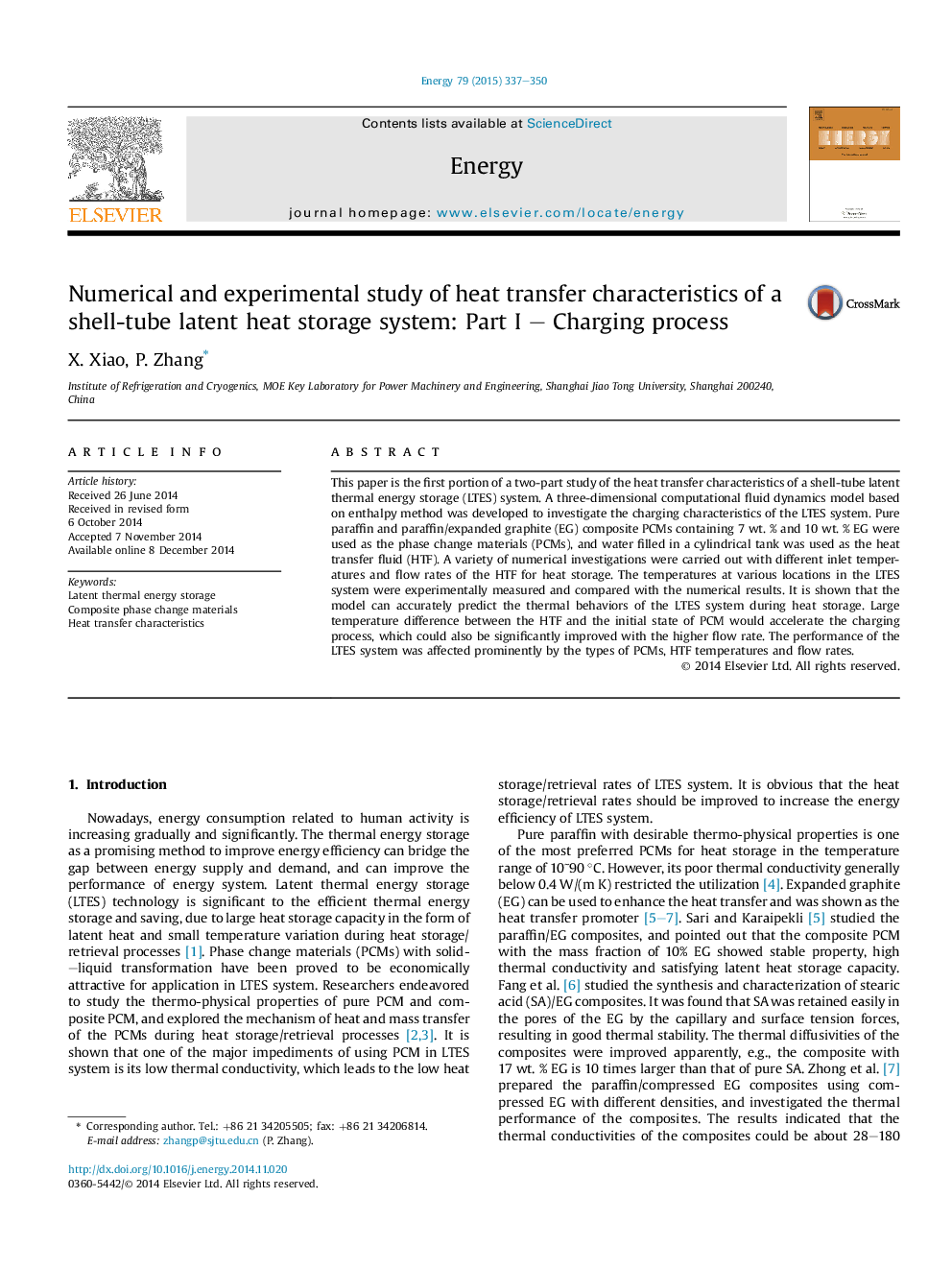| Article ID | Journal | Published Year | Pages | File Type |
|---|---|---|---|---|
| 8075867 | Energy | 2015 | 14 Pages |
Abstract
This paper is the first portion of a two-part study of the heat transfer characteristics of a shell-tube latent thermal energy storage (LTES) system. A three-dimensional computational fluid dynamics model based on enthalpy method was developed to investigate the charging characteristics of the LTES system. Pure paraffin and paraffin/expanded graphite (EG) composite PCMs containing 7Â wt. % and 10Â wt. % EG were used as the phase change materials (PCMs), and water filled in a cylindrical tank was used as the heat transfer fluid (HTF). A variety of numerical investigations were carried out with different inlet temperatures and flow rates of the HTF for heat storage. The temperatures at various locations in the LTES system were experimentally measured and compared with the numerical results. It is shown that the model can accurately predict the thermal behaviors of the LTES system during heat storage. Large temperature difference between the HTF and the initial state of PCM would accelerate the charging process, which could also be significantly improved with the higher flow rate. The performance of the LTES system was affected prominently by the types of PCMs, HTF temperatures and flow rates.
Related Topics
Physical Sciences and Engineering
Energy
Energy (General)
Authors
X. Xiao, P. Zhang,
